BVM Grotto and well, near Slieve League, Donegal
Sometimes my records are not well-kept. I am not always very organised. I’ve been a writer for over three decades, but I have trouble finding a pen even when I’m at a book signing, and when I’m out I usually forget to take a notebook. So when I find something I’m not even looking for, I can’t always be relied on to remember the details.
Still, who cares about details? It’s the shape of the picture that matters.
I say all this to excuse the fact that I’m not really sure where this well is. Or even if it is a well. There was some debate on this matter when my son and I came across the place, driving past and then reversing back in some remote Donegal valley. At the side of the road stood a Marian shrine, set into the rock, accessed by a gate with the initials ‘BVM’ - Blessed Virgin Mary - set into them in iron. There was a statue of the famously identifiable blue-and-white Catholic Mary set into the hill, with another statue of what appeared to be some unidentified female saint or pious laywoman praying to her below.
Beyond that, there was not much here, besides a few offerings, a small well - we’ll come to that in a moment - a bench, and a plaque that explained the genesis of the place. This, it seemed, was one of many similar grottoes in Ireland which were built to commemorate the anniversary of the famous Marian visions at Lourdes. They were all built in imitation of the place in France in which a schoolgirl was said to have had visions of the Virgin Mary in 1858.
The site of the original visions is now a massive Catholic pilgrimage destination:
Not being a Catholic myself, I’ll admit to finding the whole business of the ‘Marian apparitions’ a bit … baffling. Let’s just say that the mother of Jesus has made a habit in the last few centuries of appearing to Catholic Christians - especially children - and imparting mysterious messages. The most intriguing of these was that at Fátima in Portugal, where the Virgin appeared to three schoolchildren and imparted three secrets, which were then delivered by the children to the Vatican, for the Pope’s eyes only. Naturally this has given rise to some juicy conspiracy theories about what the secrets were, given that they were said to concern the future of the Church. The Vatican claims to have released the texts of all the secrets, but there are those who say that the real version of the third secret was in fact kept back from the public. It’s said to reveal that the Catholic Church will be corrupted from within, by Bishops and a Pope, before its final collapse. Which I’m sure would never happen.
The Lourdes vision was less controversial, but only slightly. Here a young woman, who identified herself as Mary, is said to have appeared before schoolgirl Bernadette Soubirous a total of eighteen times at what is now the Lourdes grotto. By the time of the final appearance, thousands of people had gathered to witness the ongoing miracle, but only Bernadette saw the visions, and only Bernadette heard her finally introduce herself. When asked who she was, the woman replied, ‘I am the Immaculate Conception.’
Cynics have pointed out that this vision occurred only four years after the Catholic Church had officially dogmatised the controversial notion of the Immaculate Conception - the suggestion that Mary was miraculously born ‘without sin’, like Christ himself. It was certainly handy timing. In the face of scepticism from the Orthodox, the Protestants and even some in the Catholic world, the new dogma had now been officially confirmed by none other than Mary herself.
Me, I’m staying out of the argument over the veracity of Marian apparitions. I like a quiet life these days. I’ll just observe here that they are a fascinating example of the Folk Christianity I’ve been writing about in this series. Almost exclusively Catholic, these public visions of Mary continue to draw huge crowds, sometimes against the wishes of the Church authorities, who are always running to keep up with the folk devotion they inspire. Young Bernadette, for example, was banned from the grotto several times by her own family and the local priest, who were all sceptical of her claims, and after the final vision, the town’s mayor had the grotto sealed off from the public. She won out, though. The Lourdes grotto is now reproduced all over Ireland, with the same pattern each time: Mary up high in a cave on a hill, with young Bernadette praying down below:
But what of the well? It can be found hiding in a corner of the grotto, in a cleft beneath the rock:
In keeping with tradition, though, at this particular grotto even the water proved controversial.
‘That’s not a well’, said my son.
‘Yes it is,’ I said, ‘it’s got water in it.’
‘So what? A bucket’s got water in it. That’s just a puddle.’
‘It’s not a puddle, it’s too deep. And it’s got a source.’
‘No it hasn’t. It’s just rainwater coming off the rock. It doesn’t count.’
We agreed to disagree, and headed back to the van. I found out later that at Lourdes, Mary is said to have told young Bernadette to dig into the ground, and when she did, a well spring up at her feet. Maybe this little pool was an imitation of that one. Or maybe it was the real thing. Who knows? What is real after all, and who gets to decide? A simulacrum of Lourdes seems an appropriate place to be asking that question.





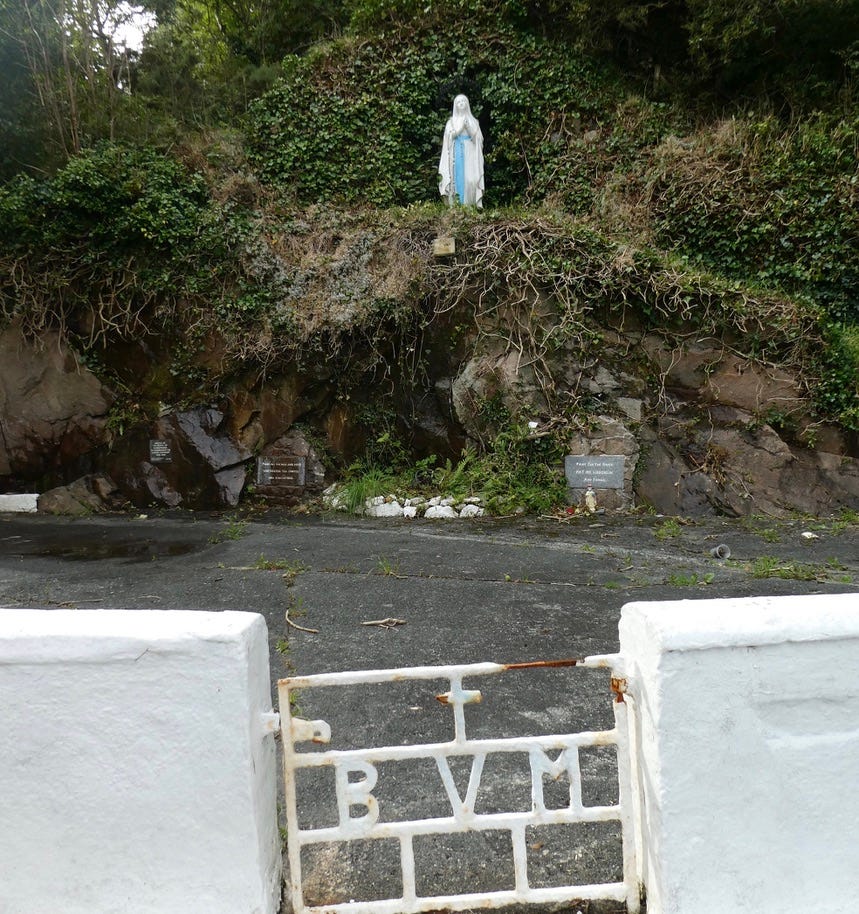
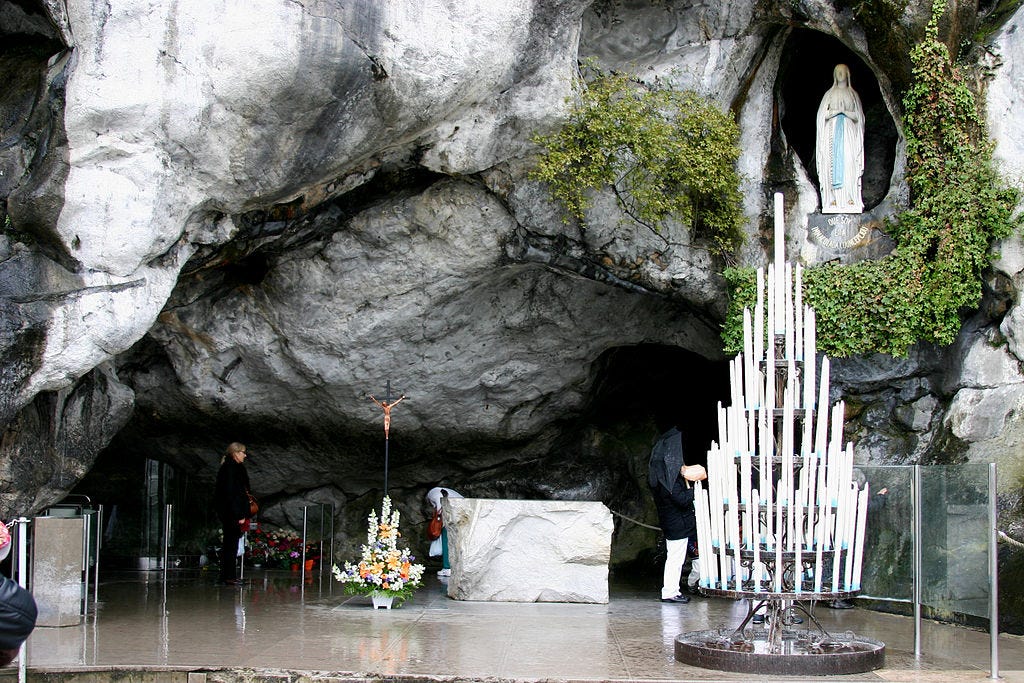
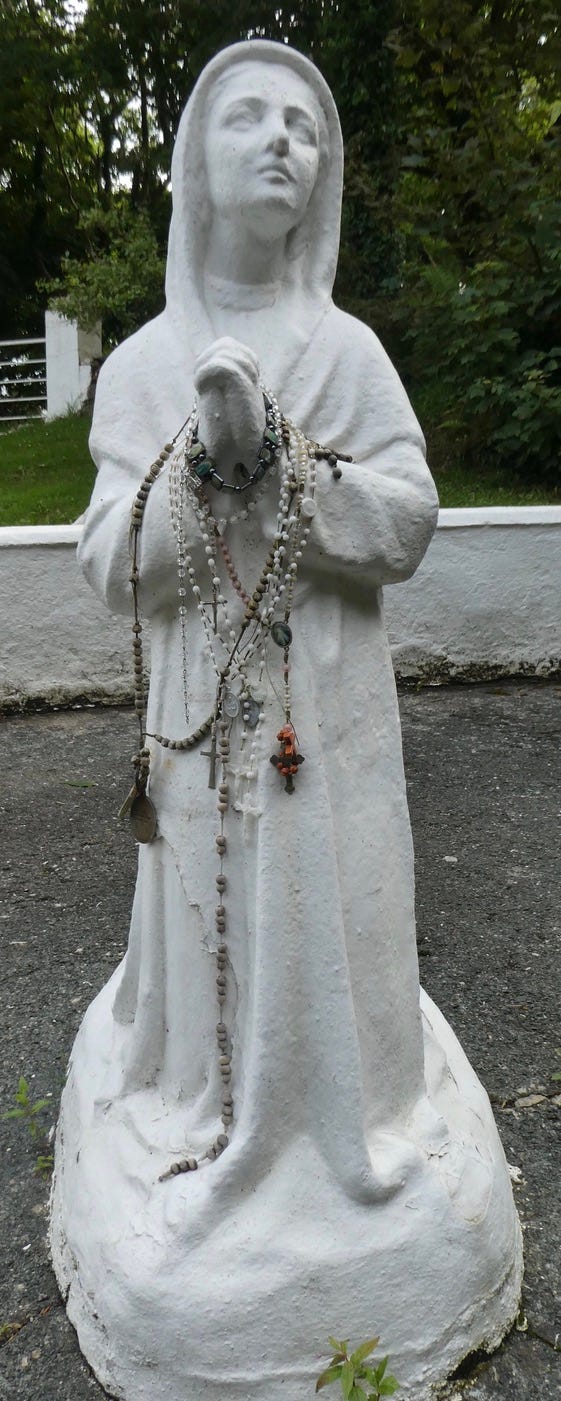
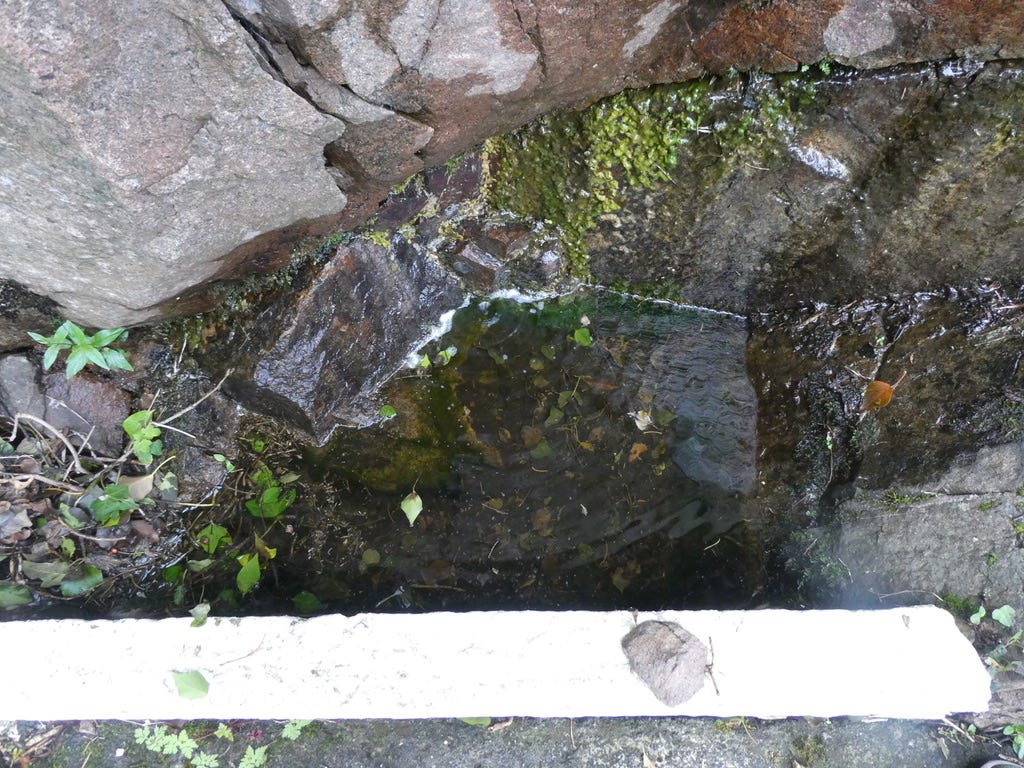
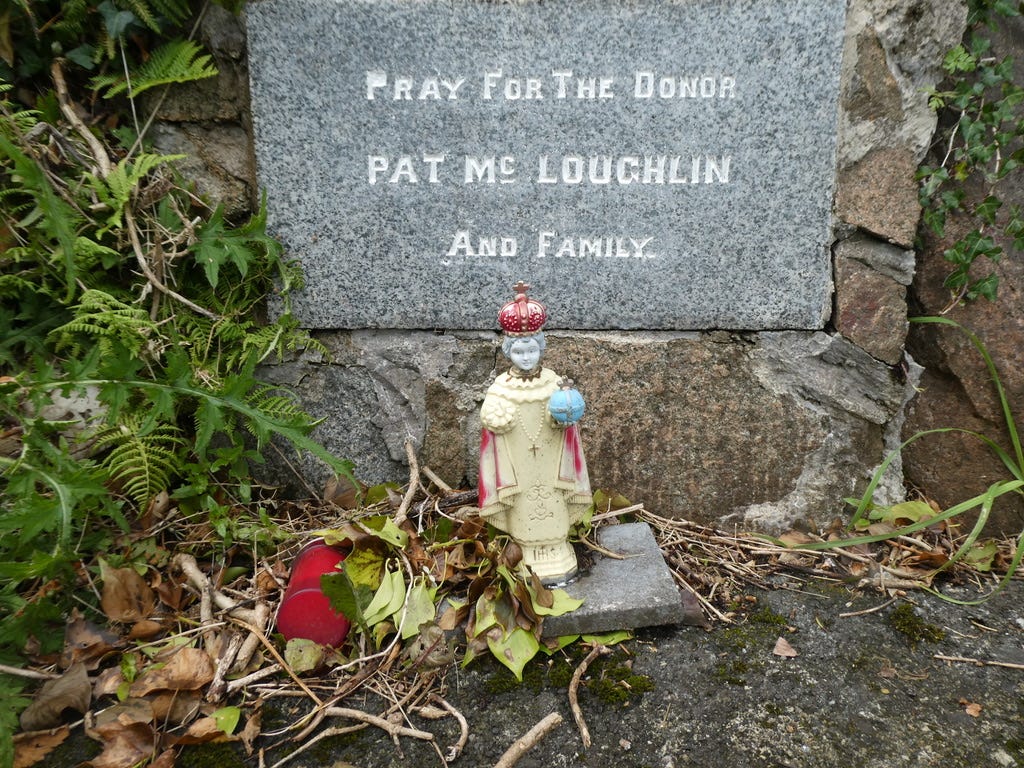
I enjoyed rereading your presentation of your well journey this morning, Paul, as I had forgotten much that appeared in it.
I am sure that the apparitions of Mary are a trial, and an embarrassment to the official representatives of a Church which suffers from the same problems inherent in bureaucracy that plague all of our formal institutions right now, religious or political. The Catholic Church would like the apparitions to go away, to be able to conduct business as usual INSIDE THE CHURCHES, and under a roof.
How much tends to get lost under the imperative to organize our spiritual experience...
But how to keep it alive, and pass it on without organisation (to the extent that any spiritual experience can be passed on...) ?
Right now I am going through Euripides' "The Bacchae" with a fine toothed comb, as we say. It is about non believers, water miraculously appearing in the mountains when the women claw at the ground, crazy women hunting, and tearing animals and people to pieces sometimes, with no roof over their heads. An untamed approach to an untamed religious experience with Dionysos who is not a sympathetic figure at all, contrary to Jesus, who is kind and forgiving (but... not always, I seem to remember). "The Bacchae" explores what happens to people who can't seem to muster belief, and it is not pretty.
Mary is at the opposite end of the spectrum from the Bacchae. Refreshing, and comforting.
It is my understanding that Catholics (like me) and Orthodox agree that the best way to discern whether an apparition, or any phenomenon at all, is from God or the Father of All Lies is to look at the fruits. I take it that the devil has proved to be rather good at the long con now and then, but still, I find it very hard to believe that demonic delusions would incite people to pray and crank up their devotion, as has been the case with the apparitions recognised by the Church. After all, there's no shortage of hoaxes and 'enlightened ones' that have been properly discredited.
I believe the Marian apparitions to be true, is what I'm saying. Of course, I'd much rather use them as an inspiration for my own faith than to try to bash other denominations over the head with them or to convince myself that Catholics are more righteous.
Glory to God.